
Multi-day treks are the perfect way to connect with nature (while getting some seriously solid exercise). Many famous treks worldwide offer breathtaking scenery and one-of-a-kind experiences but are not for the faint-hearted. Unlike the best day hikes and scenic walks around the world, these treks often require carrying your own essential items (including camping gear and food supplies) and sometimes cover rougher terrain. You therefore need a certain level of fitness to take on long-distance treks, but it's worth it.
If you’re intrigued at the thought of exploring some of the most famous multi-day treks around the world, then strap on your gear and let’s get going!
Backpacking Checklist

The number one rule of trekking is to be prepared– there’s no access to Uber Eats or Amazon delivery on these journeys, so you’ll need to plan carefully as you prepare for your journey. There are many essential items you need to take on backpacking trips, along with some not-as-crucial (but nice-to-have) items:
Essential items:
- First aid kit
- Food
- Plenty of water
- Camping gear (tent, hammock, etc.)
- Hiking boots
- Hiking socks
- Sleeping bag
- Rain jacket
- Sun protection
- Physical map
- Toilet paper
- Spade / hand shovel
- GPS unit
- Portable power source for charging phone(s)
- Camping stove
- Extra clothes
- Rain pants
- Sleeping pad
- Repair kit
- Bear canister
- Lip balm
- Extra batteries
- Trekking poles
It’s important to also remember that out of consideration for other hikers and to preserve the natural beauty you’re going there to enjoy, you should be prepared to take any trash with you as you progress along your route (and plan accordingly when you pack).
The 12 Best Multi-Day Hikes
The Overland Track - Tasmania, Australia
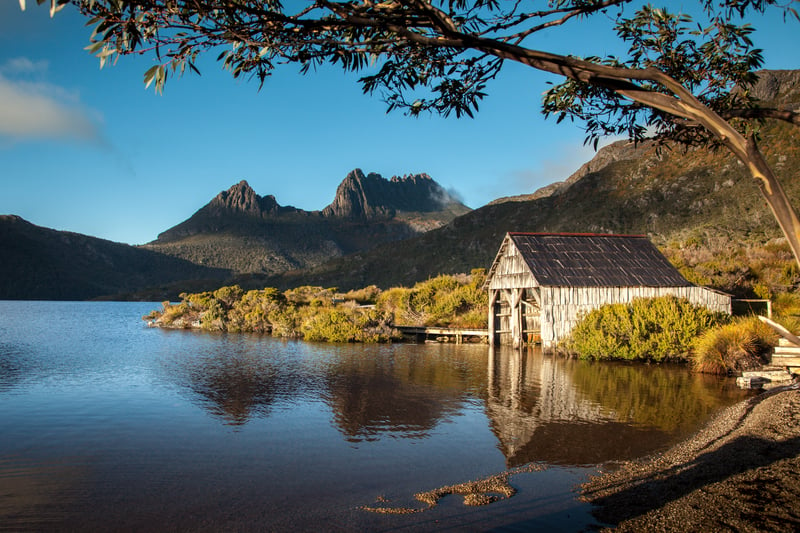
The Overland Track in the island state of Tasmania is not only the country's most famous multi-day hike but also one of Australia's most challenging and scenic treks. This life-changing journey attracts hiking enthusiasts from around the world who are keen to get a taste of the uniquely Australian landscape and nature.
The trek starts at the iconic Cradle Mountain National Park and ends at Australia's deepest lake, Lake St. Clair. The entire trail takes you through the Tasmanian Wilderness World Heritage area, consisting of glacially carved valleys, mountain summits, fragrant eucalyptus forests, cascading waterfalls, ancient rainforests, and beautiful alpine meadows. The trip will be physically demanding and possibly emotionally challenging at times, but the scenery, expansive wilderness, and sense of accomplishment will make it worth your while.
Fast facts:
Length: 40 miles
Duration: 6 days (one-way)
Difficulty: Moderate
Porters: No porters available
Best time: December to April
Lodging: Camping and public huts, which just provide shelter designed for sleeping, cooking and warming up inside. Tasmanian Parks and Wilderness are currently upgrading all facilities along the Overland Track. Alternatively, you can book private hut accommodations which come with better facilities, meals, etc.
Kilimanjaro Trek - Mount Kilimanjaro, Tanzania

Mount Kilimanjaro is one of the iconic landmarks in Africa, and one of the world's best places to see wildlife. A towering, snow-capped mountain jutting out of the African savannah, it is the highest point in Africa and the tallest freestanding summit in the world, making it a truly majestic sight to behold. There is a 2-day trail leading to the mountain with the option to climb Kilimanjaro, which takes five to six days return trip. However, due to the presence of African wildlife, this is not something you can do independently. All trekking done inside Kilimanjaro National Park must be led by a certified (and armed) guide.
After being taken through the Kilimanjaro Park gates, you will begin your climb along the Marangu route, which takes you through a rainforest of towering trees, colobus monkeys, and abundant birdlife. You then stay at the Mandara huts at about 2,720m elevation for the night. The next day you will leave the rainforest on an ascending path into open moorlands. The views over Mawenzi and the summit of Kibo are spectacular. If you continue on to the summit, the rate of ascent and altitude will become more challenging. With the right expert trek team guiding you to reach the 5,895m summit, you will be rewarded with one of the most incredible views in Africa.
Fast facts:
Length: 23 miles
Duration: 2 days to base - 5 days to peak
Difficulty: Moderate to base, difficult to peak
Porters: Personal porters available for hire
Best time: January - February or August - September
Lodging: Huts with facilities, camping, eco lodges
The Appalachian Trail - USA
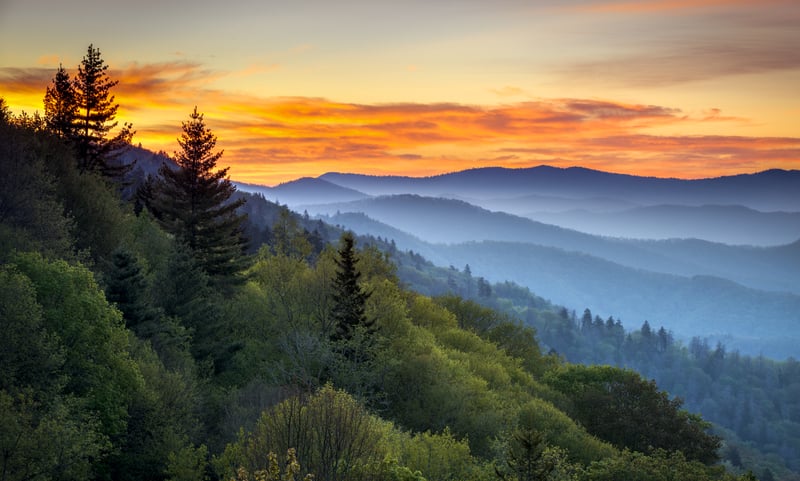
The Appalachian Trail is a famous east coast US trek extending an epic 2,200 miles (3,540 km)! It passes through the scenic Appalachian Mountains and an incredible 14 states. Until recently, it was the longest hiking-only trail in the world (we’ll discuss which new trek surpassed it soon). While millions of people hike segments of the trail each year, some thru-hikers conquer the entire trail in a single season.
The trail is so long that the Appalachian Trail Conservancy provides suggestions and tips for day, multi-day, and thru-hiking. They also offer plenty of resources to help you prepare. Along the way, expect to see mountains, forests, farms, rivers, lakes, towns and all sorts of interesting people. While the long-trekkers mostly camp, there are also hotels along the way to freshen up with a shower and proper bed.
Fast facts:
Length: 2,200 miles
Duration: Months
Difficulty: Difficult
Porters: Porters available for hire
Best time: Late spring and early fall
Lodging: Camping, hotels, hostels
The Kumano Kodo - Japan
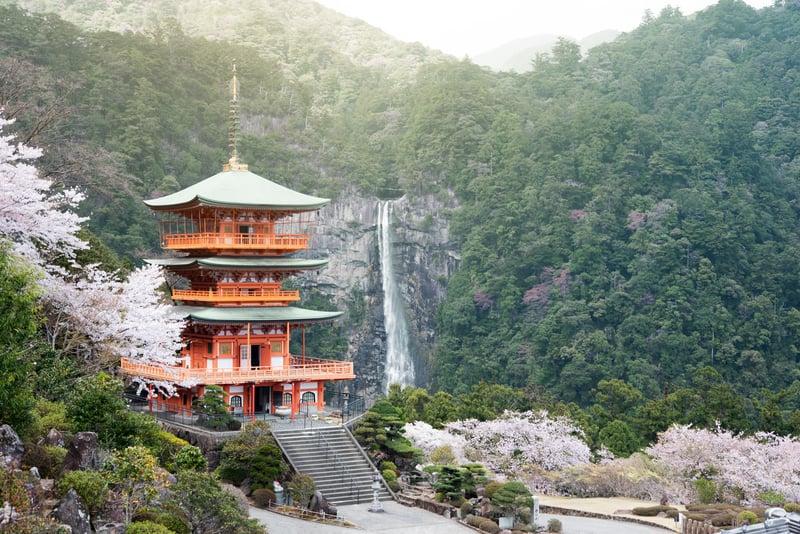
The Kumano Kodo is Japan’s ancient pilgrimage that consists of multiple routes stretching across the mountains of the Kii Peninsula. For over 1,000 years, Japanese people from all walks of life have traversed the Kumano Kodo trail. Today, this collection of trails is both a UNESCO World Heritage site and a major tourist attraction. It is a great way to experience the beautiful evergreen forests of Japan and the spiritual origins of its culture.
There are four routes to choose from, all with their own unique accommodations and scenery:
- Nakahechi Imperial Route: The main route with solid infrastructure, including English maps, signs and luggage shuttle services. It also has traditional lodgings in isolated small Japanese villages, adding to the authenticity of the experience. This is one of the more moderate routes with a total length of 24 miles / 38 km.
- The Kochechi Mountainous Route: A difficult section of steep trails up to 1,000m in elevation, yet you are rewarded with sensational mountainous scenery. It is a difficult track with a total length of 40 miles / 65 km.
- The Ohechi Coastal Route: This route offers expansive Pacific Ocean vistas which attracted many famous writers and poets during the Edo period (1603 - 1868). Some sections only have Japanese signs and public transportation is limited, so be prepared. It is a moderate trail with a total distance of 23 miles / 37 km.
- The Iseji Eastern Route: This route features cobblestone paths through bamboo forests, mountain ranges, beaches and terraced rice fields. Arguably the best (and definitely the longest) of the four at 106 miles / 170 km long! The entire trail will take one to two weeks and is considered a difficult trek.
In an effort to be low-impact and practice sustainable tourism, it is recommended that you hire Kumano Kodo local guides who will lead and share their local knowledge and passion for Kumano Kodo with you.
Fast facts:
Length: Range from 24 to 106 miles (38 km to 170km)
Duration: 1 - 14 days
Difficulty: Moderate to difficult
Porters: Local guides available
Best time: March and June
Lodging: Hotels, Ryokan Inns, Minshuku guest houses
The Inca Trail - Cusco, Peru
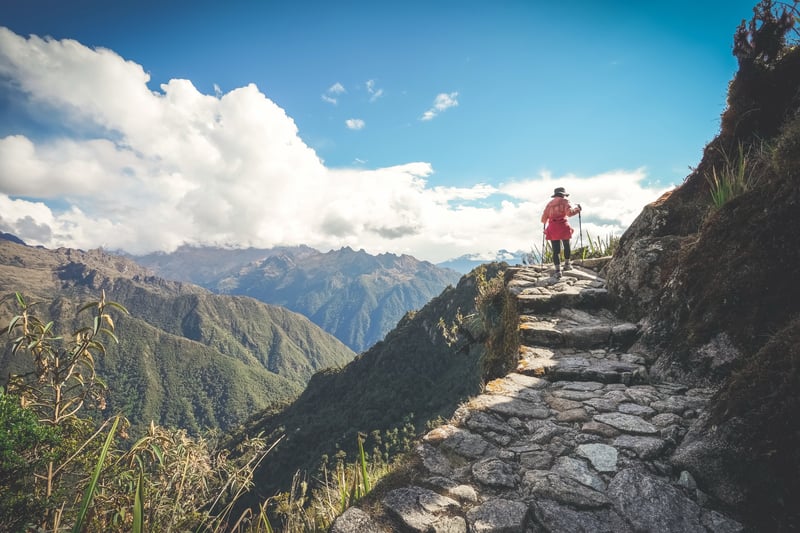
Next up is perhaps one of the most famous trails in the world, The Inca Trail. The iconic trek leads to the ancient village of Machu Picchu perched atop a mountain in the Peruvian Andes. This UNESCO World Heritage site is high up at 7,970 feet above sea level, so it's essential to carefully prepare for this one in order to not succumb to altitude sickness. We recommend staying in Cusco for at least two to three days before attempting the climb to give you time to acclimate.
Buy your tickets in advance, as they are almost always sold out on the day. Wear long pants, not shorts, as the insects are relentless and will have you itching for weeks.
Consider following the example of local guides and chew coca leaves to give you an added boost to help get up the mountain, and take lots of water (you will need it!). While hiking the Inca Trail in three days is possible with the help of porters carrying the tents and doing the cooking, we recommend doing it over four days unless you are highly hike-fit.
It’s not easy, but the reward is worth it— Machu Picchu might just be the most incredible blend of nature, unsurpassed views and ancient civilization you will ever experience.
Fast facts:
Length: 26 miles
Duration: 4 days
Difficulty: Difficult
Porters: Yes, essential
Best time: May to September
Lodging: Tents/camping, eco tourism
Coast to Coast Walk across England, United Kingdom
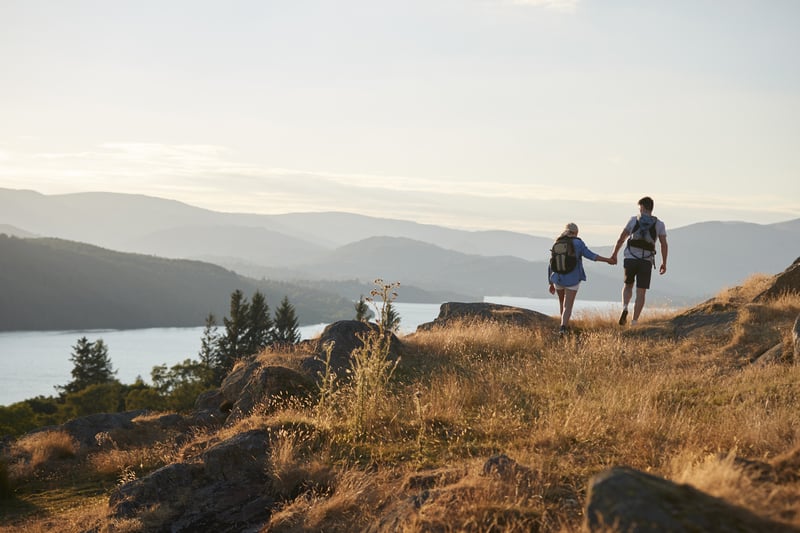
Outlined by Alfred Wainwright in his 1973 book A Coast to Coast Walk, this famous walk takes you 182 miles from the West to the East coast across Northern England. It encompasses three contrasting national parks:
- Lake District National Park
- Yorkshire Dales National Park
- North York Moors National Park
The trek begins at St. Bees on the Irish Sea and ends at Robin Hood's Bay on the North Sea. On the way, expect to see some of England's finest landscapes, including rugged mountains, pristine lakes, and picturesque valleys.
One of the best parts of the famous trails is the unique lodging. Take your time to book in advance and choose from classic English guest houses, hotels and country inns steeped in history. They have a charming and cozy feel that enhances your well-earned rest. You can also book luggage transfer services in between your accommodations.
At the end of the epic walk, you will reach Robin Hood's Bay, a charming village perched between the cliffs by the sea. We recommend rewarding yourself with a pint in one of the traditional fisherman's pubs and hearing a yarn from the locals about how the town got its name.
Fast facts:
Length: 195 miles
Duration: 14 days
Difficulty: Moderate to difficult
Porters: No, but transport of luggage is available
Best time: April - October
Lodging: Hotels, guest houses, inns, camping
El Camino de Santiago Trail, Spain

What Kumano Kodo is to Japan, El Camino is to Spain. It's considered one of the best treks globally and is also an ancient spiritual path dating back to medieval times, and has become the setting for movies to inspire travelers.
There are several routes throughout both Spain and Portugal, however, we recommend the Northern Coast trek starting from San Sebastian as it's one of the best walks with a view.
The trail starts at Saint-Jean-Pied-de-Port on France's border with Spain and finishes at Santiago de Compostela (located on Spain's northwest coast) about 250 miles away. The duration of the trek depends on your pace, and there are several resources available to plan some excellent stops along the route.
There is a range of Camino De Santiago accommodation options along the way, including hostels, hotels, and guest houses. There has been a resurgence of interest in this trek recently, and as such we recommend booking your accommodation well in advance, especially if you plan on walking in the summertime. The vast majority of trekkers are on their own quests, whether spiritual or recreational. Either way, El Camino de Santiago is considered a great way to disconnect and allow yourself time to reflect and follow your thoughts wherever they may go.
Fast facts:
Length: Varies depending on the route
Difficulty: Moderate
Porters: Backpack transport available
Best time: April to October
Lodging: Traditional albergues, family-run hotels, luxurious paradores
Dana to Petra, Jordan
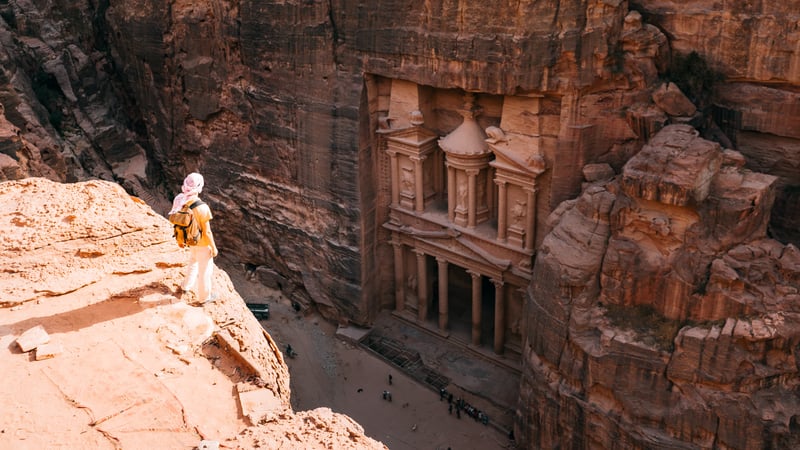
Recently named by National Geographic as one of the fifteen best walks in the world, this is similar to the Inca trail of the Middle East. You've probably seen pictures of the rock city of Petra, the iconic UNESCO World Heritage site where this trek ends.
The ancient temples are surrounded by mountains containing several gorges and passages. But the incredibly diverse walk to Petra is just as fascinating as the destination. The route starts from the Dana Reserve and takes you from the heights of the mountains to the depths of the Araba Valley before climbing back up again and across Wadi Rum, the unique desert landscape made famous by Lawrence of Arabia. It crosses diverse ecosystems, several climate zones, canyons, and a labyrinth of valleys and gorges before bringing you to one of the world's most famous archaeological sites. You really will feel like you’re in an Indiana Jones movie!
Fast facts:
Length: 52 miles
Duration: 9 days
Difficulty: Moderate
Porters: Camels available for hire
Best time: February - April or October to December
Lodging: Eco lodges
The Kepler Track, New Zealand
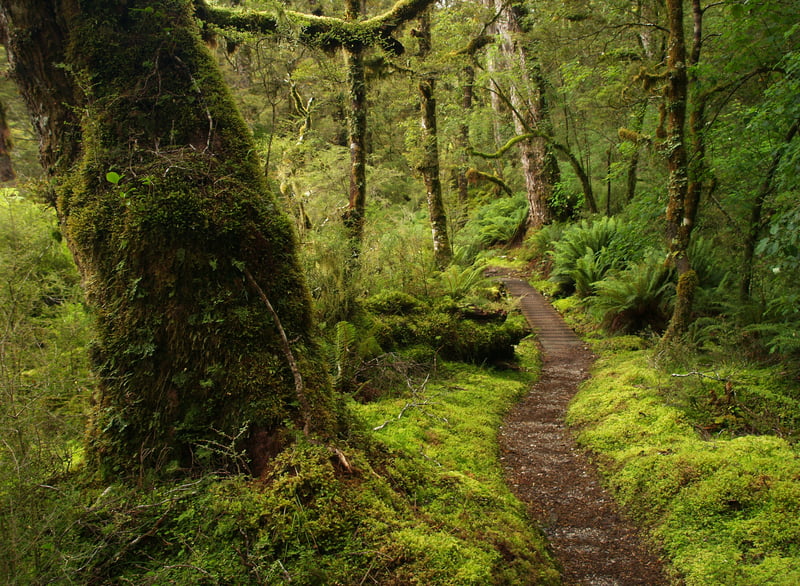
The Kepler Track is among the most popular in Fiordland National Park and one of the ten “Great Walks” in New Zealand. While most other treks in the area originated from ancient Maori trails, this one is also relatively new and created purely for hikers. The entire loop track is about 37 miles long, takes around four days to traverse, and is considered moderate to difficult.
The best time to hike the Kepler Track is during the Great Walks season (late October to late April) and huts or campsites must be pre-booked if you wish to secure accommodation. The cabins have bunks with mattresses, toilets, heating, solar-powered lighting, basic cooking facilities, and cold running water. You can go during the winter months but with reduced facilities and additional safety risks (including avalanches), so we suggest sticking to the October - April window.
Along the trail, expect to see the best of Fjordland National Park, including forests, waterfalls, mountains, and glacier-carved valleys. The park has an impressive array of flora and fauna, including giant beech trees, vast fern forests, and mosses which inspired the award-winning conservation project, Kids Restore the Kepler.
Fast facts:
Length: 37 miles full loop
Duration: 4 days
Difficulty: Moderate to difficult
Porters: No porters available
Best time: October to April
Lodging: Huts, campsites - bookings required
Everest Base Camp, Nepal
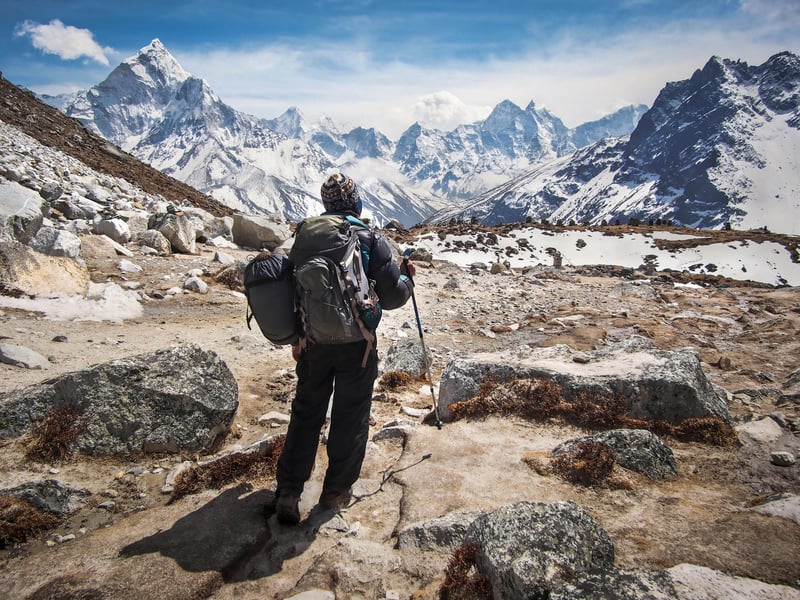
This list wouldn't be complete without the inclusion of Nepal and the Himalayas, the highest mountain range in the world. While climbing Mount Everest is an incredible feat, you don't have to do it in order to take in the majestic Himalayas. Simply hiking to Everest Base Camp is a life-changing experience in itself. The return trip takes you to the foot of Mount Everest, which itself is at an elevation of 5,600 meters! However, it's a much more achievable goal than climbing to the peak, which takes years of training, experience and a sherpa to help carry your gear.
Although you don't require a guide for Everest Base Camp, if you’d like to learn about the local culture and natural environment, you can hire one for around US$20 per day. The trail is 80 miles long and will take you 12 days. Besides the breathtaking scenery and fascinating local culture, you will likely meet fellow adventurers from all over the world.
Everest Base Camp is arguably one of the most popular treks on this list, and in recent years has been gaining a reputation for traffic jams and littering. As a result, the Nepalese Government now limits the number of hikers at any given time. Do your homework and book ahead if need be. It will be worth it— there is simply no mountain range in the world quite like it.
Fast facts:
Length: 80 miles
Duration: 12 days
Difficulty: Moderate
Porters: Sherpas available
Best time: May to September
Lodging: Tea houses, camping
Torres del Paine W-Route, Chile
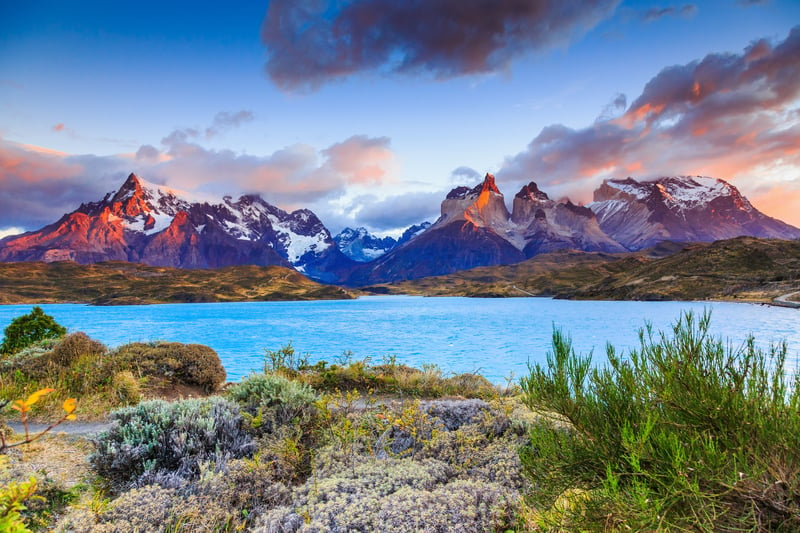
While it's of course highly subjective, we think the W-Route in Torres del Paine National Park, Chile, is up there with the best. A part of incredible Patagonia, the W-Route is 46 miles of gentle terrain and can be walked in four to five days. It takes you to three iconic highlights of the national park: Base of the Towers, Valle Francés, and Glacier Grey.
This trail offers some of the most breathtaking natural scenery on the planet, taking you through beautiful wooded areas, sprawling lakes, and towering mountain ranges. Expect to see dazzling waterfalls, majestic peaks, and ice-cracking glaciers in a genuinely one-of-a-kind landscape.
One of the great things about the W-Route is that no matter what time of day you embark, this wonderland is awash with breathtaking color, from soft pastels at dawn to rich jewel tones at dusk. The best time to hike the W-Route is during the Patagonian summer months of December to February when the days are long and the skies clear.
The trail is well-equipped with lodging, including refugios (hiking hostels) where you get to meet other hiking enthusiasts worldwide. There are also plenty of camping grounds, “glamping” accommodations and luxury lodges. In other words, there's something for everyone!
Fast facts:
Length: 46 miles
Duration: 4-5 days
Difficulty: Moderate to challenging
Porters: Porters and horses are available
Best time: December to February
Lodging: Refugios, camping, lodges
Trans-Bhutan Trail, Bhutan
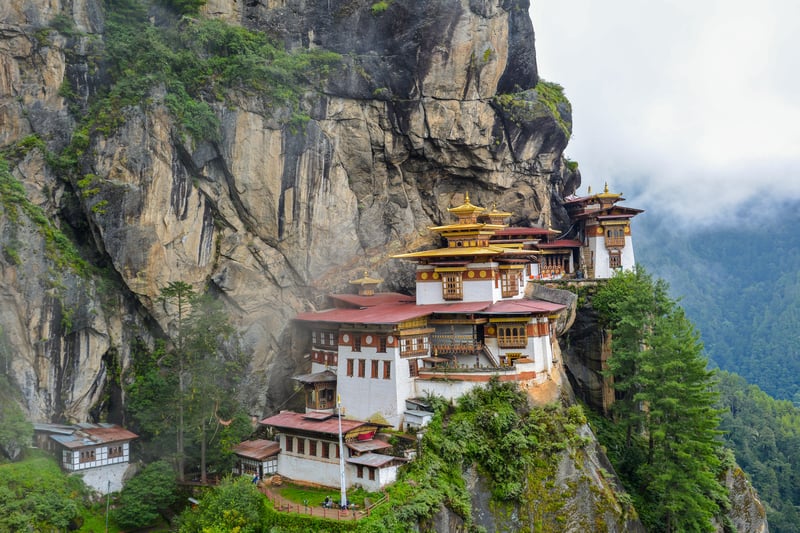
We are finishing with arguably the world's most epic multi-day trek, the Trans-Bhutan Trail in Bhutan. At 250 miles / 400km, this new trail surpasses the Appalachian Trail as the world’s longest. Located in one of the most geographically cut-off countries worldwide, it doesn’t get any more wild and challenging than the Trans-Bhutan.
The thrill starts in the air, as you approach the only international airport in the vertiginous Kingdom of Bhutan. Your plane soars through steep valleys with the mountaintops so close that you feel they will clip your wings (and that’s just the beginning).
Since recently reopening to international visitors post-pandemic, there is a newly restored hiking track that cuts through the center of the country. What makes the trail truly special is that while it’s new to the public for leisure activity, it is actually a centuries-old trail dating back to at least the 1500s which was used for communication and transport. Expect to see towering mountains, ancient monasteries and temples perched on a cliff’s edge, rural villages, glacial rivers and thick jungle.
If you are an experienced multi-day hiker, then the Trans-Bhutan could be the most challenging and rewarding trek you ever experience.
Fast facts:
Length: 250 miles
Duration: 11-36 days
Difficulty: Challenging
Porters: Trail guide, local guide, baggage transfer, etc
Best time: March - May and September - November
Lodging: Camping, hotels, tea houses
Have we left any multi-day hikes out? Tell us your favorite in the comments below. Otherwise, happy hiking!
About Storylines
Storylines is a luxury lifestyle ship with a like-minded community of globally-conscious citizens traveling the world. We seek unique experiences, cultural events, and community participation while practicing and promoting sustainable travel. To learn more, visit our website.


